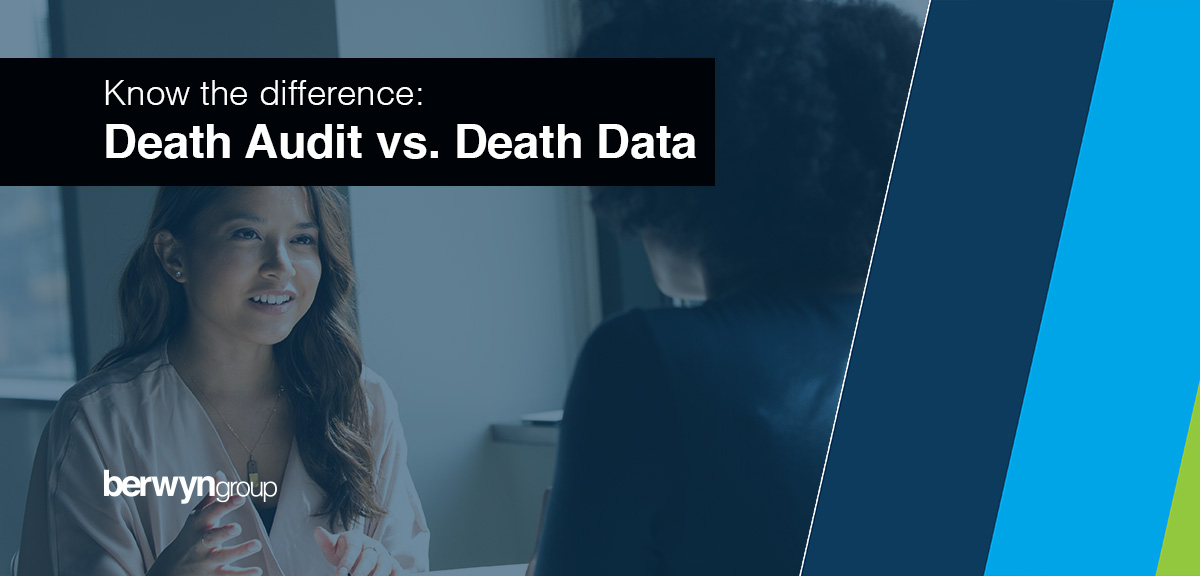The decline of data accessible via the Social Security Administration Death Master File (DMF) in 2011 redefined the Death Audit category. With this change, Death Audit providers became Death Data providers. This shift added complexities to death identification resulting in a significant number of missed deaths and associated overpayments amongst population groups monitored for decedents, e.g. pension plan participants and insurance company books of business.
Prior to November 2011, the DMF could be used to identify up to 95% of deaths via a single, consistent piece of data – social security numbers. As a result, when customers submitted population sets including social security numbers to Death Audit providers, a comprehensive list of validated decedents could generally be returned, i.e. a Death Audit was completed.
With the reduction in data available via the DMF on average only 16% of deaths can now be identified using the DMF. Because of this, aggregation of death data via alternative data sources became necessary. Obituaries are the primary alternative data source. The increased reliance on obituaries introduced two significant data challenges: data source proliferation and data complexity.
The DMF is a single source of death data. There is no single comprehensive source of obituary data. Aggregating obituaries requires accessing thousands of sources, i.e. data source proliferation. Unlike the DMF which contains a single piece of unique data used to identify decedents – social security numbers – obituaries have no consistent unique identifier that can be used to validate a decedent, i.e. data complexity.
Faced with incomplete obituary data sets comprised of inconsistent data components, providers could no longer provide a comprehensive set of decedent matches. Instead, they were forced to provide results consisting of exact matches based on social security numbers, now a small percentage of reported deaths, along with possible matches – guesses – based on obituary information.
Most providers developed a high/medium/low system of match likelihood that was delivered to the customer. This shift from Death Audit provider to Death Data provider placed a significant burden on customers to develop their own processes to confirm decedents by validating obituaries. To accommodate this work, companies have taken different approaches to death verification. Some companies will only review/validate high probability matches. Other companies have invested in resources to review high/medium probability matches; but those resources aren’t often fully dedicated to the task of death data verification. As you can imagine, the added burden of data review coupled with differing processes has resulted in inconsistent death match identification and a significant number of missed deaths across industries.
| Source | Methodology | % Deaths ID’d |
|---|---|---|
| CertiDeath | Death Audit with Validated Results | 96.5% |
| DMF Today + State + Obits | Death Data | up to 70% |
| DMF Today + State | Death Data | up to 33% |
| DMF Today | Death Data | 16% |
The decline of the DMF led to the development of CertiDeath, the only Death Audit product that delivers a full set of validated deaths and not Death Data comprised of some validated deaths plus “guesses”. CertiDeath, the only true Death Audit solution, identifies 96.5% of decedents with 99.9% accuracy. It includes the most complete set of death data driven by evolving proprietary algorithms and a large data science team dedicated to reviewing/validating death matches. Since its launch in 2019, CertiDeath has become the most successful new Death Audit product with hundreds of customers uncovering over $1 billion in overpayments.
To learn more about CertiDeath and get a no-cost assessment of missed deaths in your population, please contact us.



